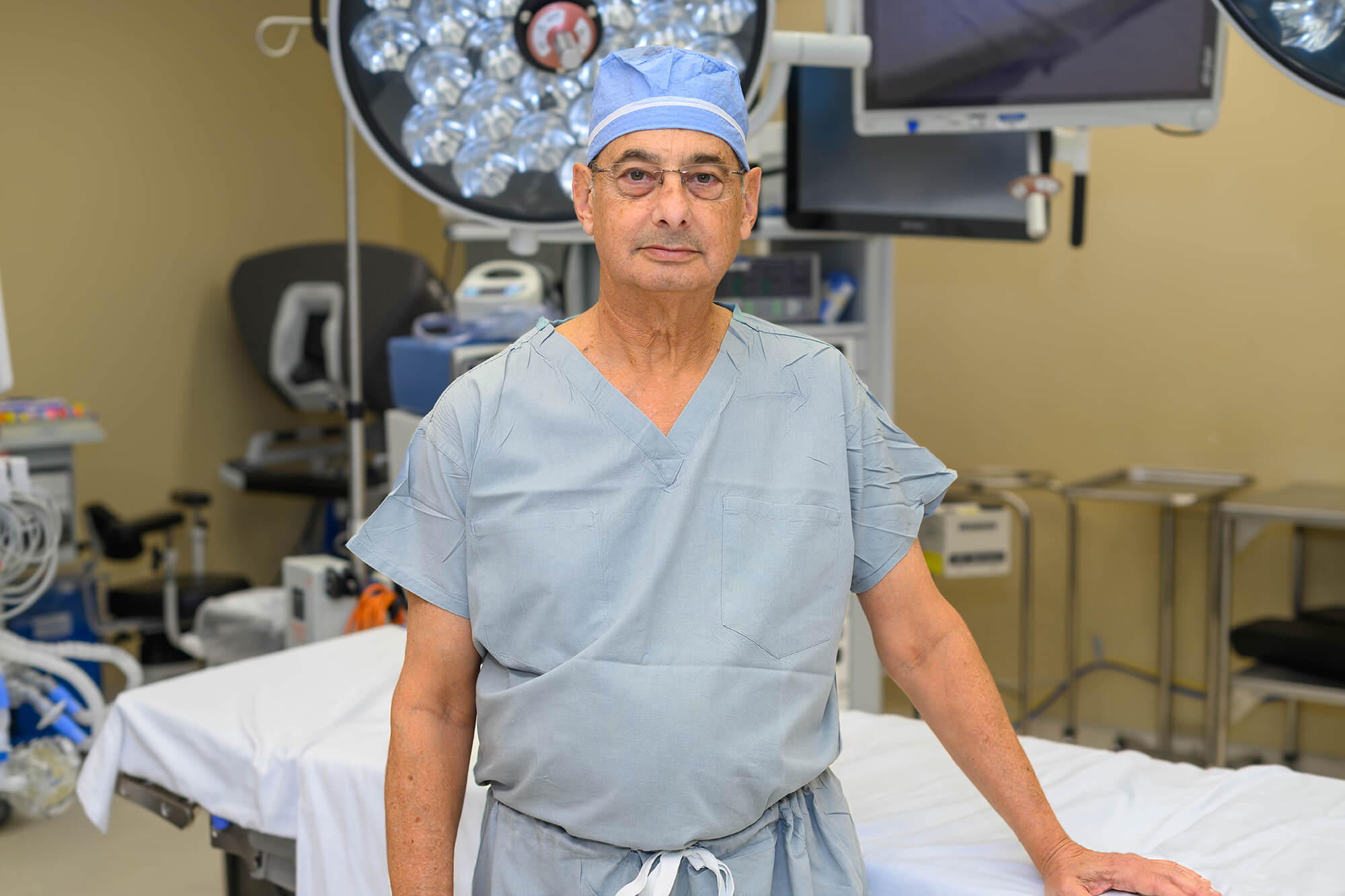
For 30 years, Michael Cher, M.D., urologic oncologist, chief of Urology and member of the Genitourinary Oncology Multidisciplinary Team (MDT), has been a leading presence at the Barbara Ann Karmanos Cancer Institute and Wayne State University. Now, upon completing his 1,000th robotic surgery, Dr. Cher reflected on how his journey with this technology began.
“I trained in the era before robotic surgery,” he described. “When robotic surgery came around in the 2000s, we were able to transfer our traditional surgery skills to the minimally invasive robotic platform. We soon became comfortable doing many types of robotic-assisted procedures.”
In October, Cher’s 1,000th robotic procedure was a nephroureterectomy for urothelial carcinoma of the kidney. This is surgery to remove cancers in the lining of the urinary tract by removing the kidney and ureter.
Benefits of Robotic Surgery
A common misconception is that robots perform surgeries independently. In reality, surgeons are entirely in control, utilizing the robotic platform as a highly advanced tool in laparoscopic surgeries.
“Robotic surgery allows very precise maneuvers inside the body for efficient and effective removal of cancers and for any necessary reconstructive procedures,” Dr. Cher said.
Due to its precise maneuvers and small incisions, robotic surgery can minimize side effects and expedite recovery. Dr. Cher has a particular interest in minimally invasive treatments for prostate, bladder and kidney cancers. He additionally uses the robot for procedures involving the adrenal gland, ureter and lymph nodes. His most frequently performed robotic procedure is the robotic-assisted laparoscopic radical prostatectomy.
“Seeing tissue up close using the robotically controlled 3D camera has improved our knowledge of anatomy and anatomical variations. Robotic surgery has even enhanced the way we perform open, traditional surgery by improving our understanding of the nuances of the anatomy not previously appreciated,” Dr. Cher said.
Depending on the diagnosis and disease, robotic surgery may serve as the primary treatment or can be integrated into a combination of therapies.
“At Karmanos, we work in teams, create relationships and make management decisions with our colleagues in medical oncology, radiation oncology, pathology, radiology, and additional specialists to ensure that we provide patients with the best available options, as well as access to clinical trials. This gives our patients control over their care, allowing them to participate in decision-making.”
Dr. Cher is an essential member of the Genitourinary Oncology MDT at Karmanos, where specialists combine their expertise to create individualized treatment plans. This multidisciplinary team approach often involves various types of cancer specialists and combinations of different treatments in some instances.
Dr. Cher continues his medical journey by training the next generation of physicians. For the past two decades, he has been an esteemed professor, chair of the Urology Department, and holder of the Dorothy and Donald Jaffar Endowed Chair at the Wayne State University School of Medicine. He devotes his time to clinical care, research, teaching, mentoring, and empowering his students and residents to deliver the best possible care in urologic cancers.
Congratulations to Dr. Michael Cher on reaching a remarkable milestone in innovative, expert care with his 1,000th robotic surgery. Thank you for your unwavering dedication to delivering exceptional cancer care to our patients through surgical excellence.